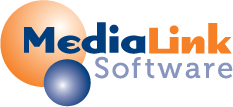What’s New in OTT and Streaming?
It’s no secret that Netflix has had its share of financial woes in recent months. They were the first and biggest streamer to hit the market and were dominant for many years. Yet, as other streamers such as Hulu, HBO Max, and Disney+ have come to market, Netflix has been losing subscribers. So, they’re looking to make up this lost revenue by luring back old subscribers and wooing new subscribers by offering a lower-priced advertising tier.
We don’t yet know how this will shake out, but it’s worth revisiting a topic we wrote about in 2019, a lifetime ago in the streaming world: evaluating OTT. Many streamers, like Netflix, rely exclusively on subscription fees, but others rely on advertising revenue as well. This means advertisers have more opportunities for video ads than ever before.

OTT (Overt the Top Television) is video content distributed through the internet, bypassing cable, satellite, and broadcast transmission. While we occasionally still hear the acronym OTT used in the business, these distributors are more commonly known as “streamers.” This includes Netflix, and streamers such as Hulu, ESPN+, and Disney+.
Traditional broadcasters have gotten into the streaming game with their own dedicated streamers, such as Paramount Plus and Peacock. There are also niche streamers that strictly show food, health, or religious programming. And it’s not just young people who have “cut the cord” and are watching streaming channels, Decider reports viewers 50 and older are streaming more content than any other demographic.
With the advent of OTT, we see our ads tend to be shorter than traditional broadcast ads. We are also seeing more viewers are watching TV on auxiliary devices now more than ever. This means ads have to be designed to look good on a smartphone, as well as a big-screen TV.
This presents a real opportunity. Forbes reports that agencies love OTT advertising because it delivers ads directly to consumers on devices they can click on directly. “Unlike traditional TV broadcasting, which caters to a broad audience,” Forbes writes, “OTT services can target niche audiences. By advertising on an OTT platform, your ad dollars can go further to reach a more targeted, niche audience than with traditional forms of advertising.”
Just like anything in our business, there are a lot of factors to evaluate. It’s worth keeping an eye on what happens with Netflix if they move forward with their advertising model, and it’s worth thinking about advertising on other OTT services. As we wrote a few years ago, Media Link Software converts between GRP’s and GI’s and allows users to generate a report directly comparing schedules across different media types. OTT advertising can be structured as either a TV campaign or an online campaign. In many cases, OTT will have a higher CPM than terrestrial TV, cable, and radio.
